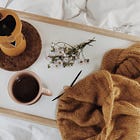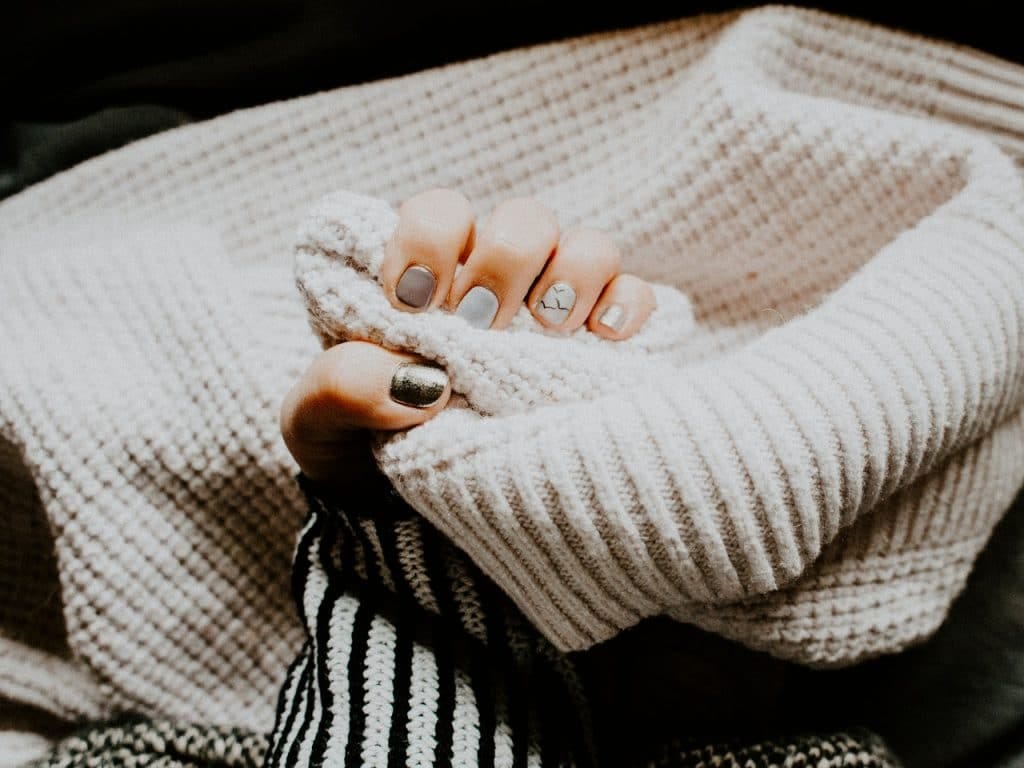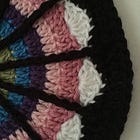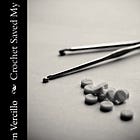A Scientist Shares How Knitting Helped Her After Having a Stroke
"Knitting provides me with a chance to focus my attention on one thing. My mind is attentive to the yarn, the needles, and the project at hand. This is so beneficial during recovery."
This article originally appeared on the PsychCentral blog Crafting to Heal which I wrote in 2019. Since the blog has since been archived, I have some posts related to craft as therapy from that archive that I want to share here on Substack. I previously shared an interview with Rebecca on knitting as a stroke survivor that then led to this new interview with Mary, which I’m sharing here today.
After reading that previous interview about how knitting heals after a stroke, Mary left a comment to share some of her own experience. I was intrigued and wanted to learn more, so I’m thrilled that she chose to complete her own interview about post-stroke knitting therapy.
Did you engage in knitting therapy before your stroke?
I don’t actually remember learning how to knit. I do remember knitting a sweater and a few other things. However, I really didn’t knit regularly before the stroke. I hadn’t really thought about the benefits of knitting at that time.
Can you share a little bit about the stroke?
A few years before the stroke, I’d had a mastectomy with a reconstruction failure. I had learned about a new technique that could help with correcting the reconstruction. It was available at Georgetown University Hispital, about 180 miles from where I live. My daughter was living in a large house, so I would be able to stay with her in my recovery. It sounded like a great plan. However, it didn’t turn out that way.
I went to the hospital where I was to have microsurgery and a 3-day ICU stay. I was released from the ICU to a regular room and was getting ready for discharge the following day. However, I collapsed in the hallway. I was conscious, but I couldn’t walk. It felt like my legs melted me down to the floor. The staff managed to get me onto a gurney and knew right away that I’d had a stroke.
Georgetown University Hospital is a teaching hospital with some of the best staff and instruments anywhere. Within minutes I was going through all kinds of imaging and tests. Despite all of the tests, they couldn’t find the specific cause of the stroke. It was a frustrating time. I remember trying to speak French and even my limited use of ASL because I was having trouble speaking in English.
What made you think of knitting therapy after that?
I’m a biologist by education, with a minor in psychology. In other words, I’m a scientist. I am used to research and advanced language. Having a stroke, with aphasia, was extremely frustrating for me. I needed to do something hands-on to create new pathways in my brain so that I could heal.
I’m also a musician, so that was originally one idea for post-stroke therapy for me. A prime care doctor in the area, who is a super violinist himself, had suggested that I start playing the piano again. It was a nice idea except that I didn’t have a piano.
So I thought of knitting. There was a coffee shop near my daughter’s house where a knitting and crochet group met weekly. I jumped on that opportunity. It provided an easy way to start getting back into knitting, which I could use therapeutically to rebuild my brain.
Was knitting challenging after the stroke?
The biggest issue with knitting was counting. When casting on, I began to count by twos and realized that I couldn’t do it without teaching myself again. That was simple enough and eventually I got up to counting by fives. It took practice.
What was the most interesting thing about that knitting therapy group?
A woman sitting next to me turned out to be a colonel in the army. She was also a nurse at Walter Reed. Of all things, she was working with stroke survivors. Imagine that!
She seemed to know a lot about me before I even told her anything. I loved meeting her.
What does knitting therapy mean for you?
Knitting provides me with a chance to focus my attention on one thing. My mind is attentive to the yarn, the needles, and the project at hand. This is so beneficial during recovery.
Plus, knitting sets an achievable goal. Once the project is done, it’s done; it’s not like the dishes in the sink that keep piling up. Plus, if you gift the item to someone, you get the additional bonus of seeing how much they love it. It’s very rewarding.
Has knitting therapy played a role in your cancer treatment as well?
Cancer treatment has been a long process. The first time, ten years ago, I wanted to just get rid of the monster, but you have to take it one step at a time. I had to have a mastectomy because the tumor was more than just a lump. Then over five years ago I discovered another lump, which required more surgery. I didn’t do chemotherapy either time. However, the second time, I did radiation therapy.
The radiation therapy took place at the Pearson Cancer Center where the knitting group meets every week. At the time I was working at a hotline for a breast cancer organization on a shift from 1 am – 9 am. I slept during the day if I could, usualyl in shifts. The strange schedule kept me away from other humans a lot of the time. I knew that I really needed that conection. The knitting group provided that contact.
Tell us a little bit more about your knitting therapy group.
I meet with the knitting therapy group every single Tuesday. I consider that the beginning of the week.
Oftentimes, we craft items for cancer patients. Sometimes an individual who is in treatment will make a special request. We use donated yarn but we’re careful to make sure that the items we make are good for people who have sensitive skin due to treatment.
Knitting anything for a cancer patient can be a very emotional thing for the knitters. When we had a big giveaway day and I saw a patient wearing something I made, I got pretty teary.
Have you ever been a recipient of a knit item?
Yes, and that is therapeutic, too. There was another group that would meet, but I couldn’t join them regularly because of the timing. However, they insisted that I take one of their blankets with me. I was doing better and tried to tell them that someone else could use it more. However, they knew better. I needed that blanket more than I realized.
When people knit for charity, they infuse every stitch with love and blessings. During hard times, the patient can hold on to those positive feelings. I experienced that.
Is there anything else you do regularly that has been therapeutic?
One of my favorite things is that I visit a farm fairly regularly. There are llamas, sheep, angora goats, cows, horses, and lots of working dogs.
If you read this far, perhaps you liked the work. The work does take work. It only continues with support, so please consider subscribing. My annual rate starts at $10 per year.










